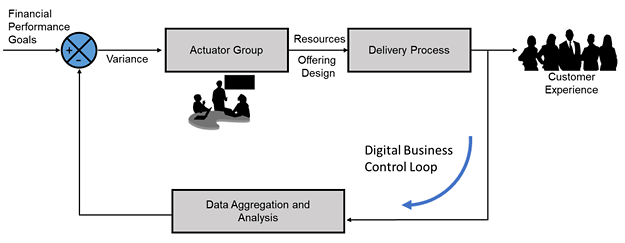
Series Forward by Dr. Timothy Chou, Chairman Alchemist Accelerator, Author Precision: Principles, Practices and Solutions for the Internet of Things (@timothychou)
In the world of high tech moving from software to software-as-service and now hardware to hardware-as-a-service or cloud computing has transformed our entire industry. As machines (or equipment) increasingly become smart and connected a similar transformation is on its way. You can already see it with automobiles. With Uber and Lyft, we're seeing how smart (OK, it's a human), connected (through their cell phone) automobiles have created an automobile-as-a-service, where all I need to do is pay for the ride, not the whole car. When and how will this happen in other industries? Read Scott Nelson’s series of articles to learn more.
“Be Prepared” is the Boy Scout motto. As an Eagle Scout, I was trained to live my life in a constant state of anxiety thinking: “What’s next?” and “What could go wrong?” I could argue that this anxiety led me to physics – what better way to predict the future than to understand the laws that model it. Of course, the world today is not as simple as a few classical mechanics models. However, “Be Prepared” is still good advice for every business leader because it creates a desire for understanding and simplicity that enable action.
The most interesting thing about our world today is its digital nature. Everything and everyone are or can be connected and every connection generates data – sometimes critical, sometimes entertaining and often with undetermined value. This is particularly true in equipment finance where the focus is typically on historical financial data but the equipment itself now generates data of all kinds – location, operation, consumption, health, etc. So, if you’re a business leader worried about how a new software-based competitor or a “social distancing shut down” event are going to impact the continuity of your company profits, you have to be prepared to use data to defend and advance your position.
Become a discovery driven culture
The first key to being digitally well-prepared is for you and your organization to always be in discovery mode. Your team should be curious not just about how your customers make decisions today, but why they make those decisions, and what is changing in their processes. This is not specific to equipment finance.
Michael Crow, President of Arizona State University, was recently asked how ASU was going to respond to the uncertainties of COVID-19 in the fall 2020 school year. “What we’re interested in doing is making certain that we are available, ready and engaging with learners no matter what the circumstances are. And we know how to do that.” Crow explained that for years his organization has been investigating how to use technology to make ASU's product more flexible and accessible for students. And it has been investing in those digital solutions.
ASU has implemented three modes of learning – full immersion in person, full immersion digital (remote) and full immersion asynchronous (on demand). Crow has all three ready to deploy in whatever mix the students and safety regulators dictate this fall because he invested in understanding how to better serve his students with digital technology. Lessors today have a similar opportunity to get closer to their customers via the operational data that equipment generates as part of the Internet of Things.
Learning from data in real-time
I have always thought that I could be much better prepared if I had a time machine to get me back to where I could make a better decision. The practical alternative is to learn from experience (“been there, done that”) and recognize a situation for where it will go – as quickly as possible. Peter Senge said it best, “The only sustainable competitive advantage is an organization's ability to learn faster than the competition.”
Today this is not only true, it’s hard. It’s hard because things are changing so fast and everything is interconnected. Learning from experience is too slow and doesn’t scale in a digital world. Digital companies have moved to real-time data to drive their learning. They don’t wait to experience the outcomes they desire; they monitor the experience data in real time and adapt. If they are in full discovery mode, they even “suggest” alternatives for customers and learn from the experiments.
Perhaps the best example of accelerated learning from real-time data is a “usage-based” model. Progressive Insurance’s SnapShot not only leverages real-time driving data to enable usage-based insurance (UBI) cost savings for its customers, it also benefits from automated actuarial analysis across a plethora of meta-data fields enabling targeted risk management. I was part of a usage-based-lending (UBL) discussion recently where the UBL advocate described how his “risk managers” couldn’t understand how they could approve a deal that “had no guaranteed revenue.” They had no experience with usage rates on the equipment and so could not evaluate the risk of financing only the use of the equipment.
Usage-based models are not new. Everyone understands Uber, Lyft, Netflix, and Airbnb, but those relying on historical data have no way to consider this new business model. UBL is a hot topic in equipment finance today because it allows lessors to provide their service more cost effectively, customers only pay when they use, as well as expands capital efficiency by enabling increased usage of the equipment by multiple parties. A “prepared” lessor will not only have live data feeds telling them when a piece of equipment is used, they will have been collecting that data for several years because they were hoping to understand their customers better. By the time others observe a new customer preference or behavior, the “data-based experimenters” will already be taking advantage of the new norm.
Build for agility – products and organizations
Unfortunately, a discovery culture and appreciation of fast learning from real-time data will be for naught if an organization is not built to adapt. Both products and organizations must be designed for agility in how they operate as well as the value they deliver. Tesla builds cars today that receive automatic software updates once a month, according to user forums. Compare the delivery of new features and upgrades every month to few “recall” notices a traditional car manufacturer offers over the life of the product. For Tesla, the car itself is a mass of sensors generating terabytes of data informing product managers how the product performs as well as how the drivers behave. Automotive designers have long understood the importance of the driving experience, but Tesla is the first to build a car that plans for and adapts the connected driving experience continuously.
The same must be true for organizations. A digitally prepared organization operates like a control loop on business delivery. The organization captures data from customer delivery, analyzes that data for variance from both performance and satisfaction goals, and then feeds back that learning to an “actuator group” that adjusts resource allocation and process to meet the desired business state. The faster the organization closes this loop the more tightly it can maintain operational performance goals and competitive advantage.

Digitally prepared organization follows “control loop” design
“The greatest danger in times of turbulence is not the turbulence, it is to act with yesterday’s logic.” – Peter Drucker
Drucker’s advice is particularly relevant in the post-COVID economy and if you are just becoming aware of “yesterday’s logic” it’s too late. Like Michael Crow’s unfortunate peers, you will not have time to invest. Discover, learn and adapt – fast. These are the keys to being prepared in the digital world. Those who are prepared and move fast enough will look like they knew what was coming when others become enlightened. Louis Pasteur said, “Chance favors the prepared mind.” Digital preparation makes chance a competitive weapon.